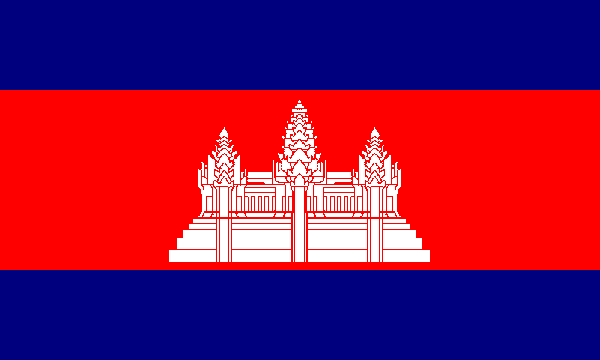Login form
Customs of Cambodia
Marriage and Family
 Although intermarriage between Khmer and other ethnic groups was a common practice in the past, it is not today. Wedding celebrations last a full day and are occasions for many guests, abundant food, and plenty of music.
Although intermarriage between Khmer and other ethnic groups was a common practice in the past, it is not today. Wedding celebrations last a full day and are occasions for many guests, abundant food, and plenty of music.
4.74 children per woman (2001)Several generations usually live together or near one another, and the elderly are cared for by their children. Because so many men died at the hands of the Khmer Rouge,
Eating
Soup and rice are the main components of the Cambodian diet. A bowl of soup may have any combination of fish, eggs, vegetables, meat, and spices. More than 20 years ago,
Cambodians eat with chopsticks, spoons, and their fingers, depending on the food and family custom. Food that has been influenced by Indian, Chinese, and European cuisine is also enjoyed. In general, Cambodian food is less spicy than in neighboring countries such as
Socializing
Cambodians greet one another by placing both hands together in a prayer position at chest level without touching the body. The higher the hands, the greater the sign of respect, although they should never be held above the level of the nose. This gesture is accompanied by a slight bow to show respect for elders or persons of higher status. Those holding or carrying something may simply bow their heads slightly. Shaking hands is not common in
Rules governing gestures come from Buddhism. While sitting, one should not point the feet toward a Buddha image or any person. To Buddhists, the head is the most sacred part of the body. One does not touch another person’s head (even a child’s), and one generally avoids sitting or standing on a level higher than that of an older person.
Among friends and relatives, visiting is frequent and usually unannounced. People remove their shoes when entering a home or wat (a temple for worship and religious education). A houseguest may be greeted with a bouquet of jasmine flowers placed on his or her desk or table. In general, Cambodians are extremely hospitable, although they may be cautious about inviting strangers into the home. If a meal is provided, guests are given the best place to sit and the best portion of food.
Recreation
Most of
Holidays and Celebrations
Vassa, the Buddhist Rains Retreat, is the period of the monsoons when monks halt their usual peregrinations and stay inside to meditate and pray. It is also known as the Buddhist Lent. During these months, restraint and abstinence must prevail. Weddings as a rule are not held during this time, and changing residences is avoided.
In the last week of September, near the end of the rainy season, an important Buddhist festival, Pchum Ben, takes place. It is a celebration on behalf of the dead and for one’s own salvation. Before it begins, people are supposed to accomplish a seven-wat duty to please their ancestors. This involves worshipping at seven wat or performing seven moral good deeds (or a combination of both). Six weeks after Pchum Ben, large or wealthy families raise money to pay for the living expenses of the monks.
The Festival of the Reversing Current, which occurs between late October and late November, celebrates a river’s return to its normal direction after having reversed its current during the rainy season. When the flow of the river, the Tônlé Sab, returns to its original direction, fireworks, canoe racing, and general merrymaking erupt at
Funerals are also an occasion for gathering. White clothes are worn to funerals, and music is an integral part of the event.
Source: Encarta Interactive World Atlas

